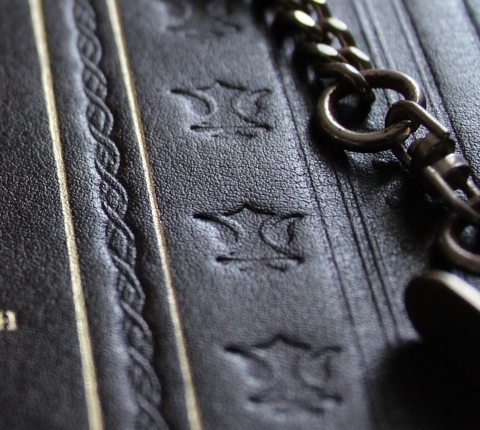You want your creation to stand out. Embossing or debossing your logo, design or text could be the answer. But which of these tactile methods should you choose? Let’s begin by explaining some of the main differences between them.
Embossing is the stamping of a design or text onto a material that causes it to be raised. Debossing is the opposite when a design or text is indented or depressed. Both methods use heat and pressure and both can be simple or elaborate.
This article will detail what these processes entail to help you decide which is the best choice for your creation.
What Is Embossing?
Embossing is a process where a design is stamped onto a material where the end result is the design or text being in relief or sticking up.
How Is Embossing Done?
The process of embossing is as follows:
- Creating dies – 2 dies of the design or text are created
- Inserting dies – the dies are placed in a heated press
- Pressing – the material is placed between the dies and they are pressed together
- Finishing the design – the material is removed from the press with the raised design complete
Different Types Of Embossing
Single level embossing
The design is raised up from the chosen material.
Multi-level embossing
The design may be raised in stages from the material or there is a different level raised behind the design.
Blind embossing
No dye or colour is included in the embossing.
Registered embossing
This is when, together with the embossing, another element is added such as ink or foil prior to pressing.
Combination embossing
This is where multiple dies are used in combination to emboss and foil stamp at the same time.
Pastelling embossing
Also known as tint leaf embossing this style creates an antique or weathered look.
Glazing embossing
A glossy finish is added over the embossed design or text giving it a shiny look.
Scorching embossing
When the dies are superheated making the design or text stand out more than in usual embossing.
What Is Debossing?
Debossing is the opposite of embossing. Using a combination of heat and pressure a design or text is indented into a material.
How Is Debossing Done?
The process of debossing is as follows:
- Design moulding – a metal plate or die is moulded with the design
- Plate insertion – the plate is placed into a heated press
- Pressing – the paper, card stock, or other material is placed in the press
- Finishing the design – the pressure is applied and the material is removed from the press complete with the indented design
Embossing And Debossing Materials
A variety of materials can be used in embossing and debossing.
- Paper – commonly used for headed paper for businesses, and posters.
- Cardstock – perfect for creating quality, professional business cards or elegant invitations.
- Metal – make your business signage stand out quite literally with metal embossing or personalise jewellery or keyrings for the perfect, personalised gift.
- Fabric – embossing or debossing t-shirts other clothing or linens is an unusual and eye-catching way to decorate them. However, not all fabrics take the heat well so bear this in mind.
- Leather – from luggage tags, wallets, and diaries to notebooks and laptop bags embossing or debossing leather goods can add a personal touch making this process especially good for luxury gifts, or promote your business.
- Plastic – plenty of everyday plastic items have been embossed such as loyalty cards, membership card, and bank cards. Please note that plastic does not always withstand the heat and pressure used in embossing and debossing.
- Food – embossing and debossing is used to decorate many of our favourite snacks such as biscuits and crackers.
How You Can Use Embossing And Debossing For Your Business
Embossing and debossing can turn run of the mill merchandise such as magnets, diaries, hats, t-shirts or notebooks into something truly noteworthy. These design methods can also transform business and loyalty cards, banners, signs and posters into really eye-catching marketing materials.
What Are The Differences Between Embossing And Debossing?
The two processes create similar effects. Both turn standard designs or text into something far more elegant and eye-catching. But there are some differences between these two processes such as
- Embossing is 3D or raised
- Debossing is indented
- Embossing uses less heat than debossing
- Embossing uses 2 dies, debossing uses just 1
- Embossing usually works well on most materials, debossing is not always suitable for plastics and fabric as they can’t always take the heat required
- Embossing is usually more costly
To discuss in detail which process would be best suited for your needs, whether it is to personalise gifts, photo albums, invitations or cards or to promote your business with quality marketing materials and merchandise, contact us at Furnells for all your embossing and debossing needs.

